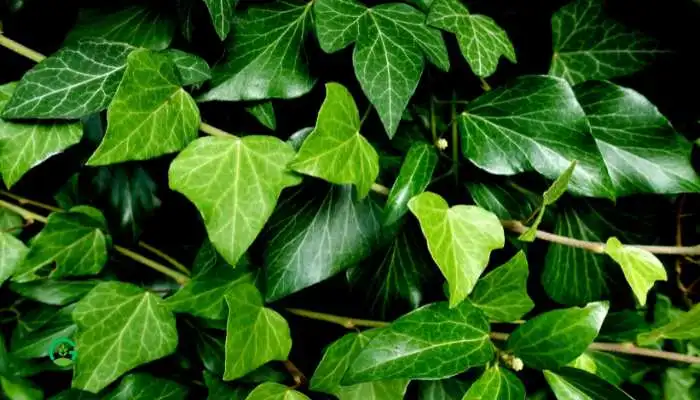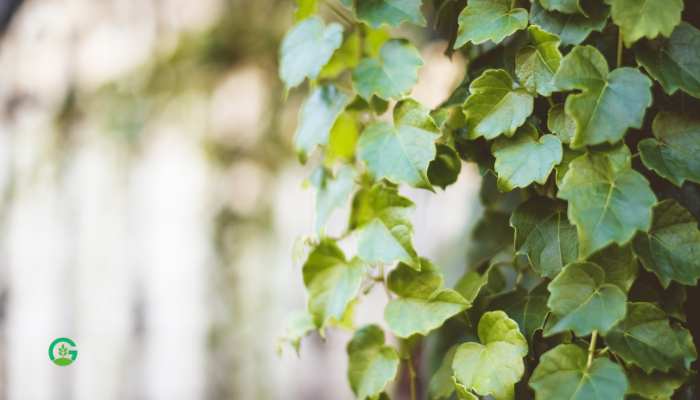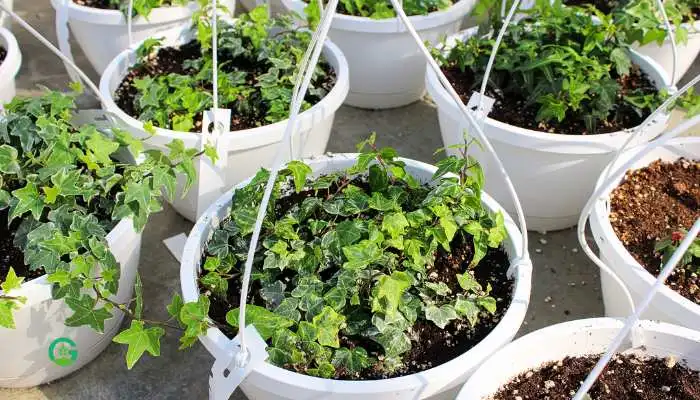Introduction
Do you ever dream of transforming your home into a lush, green sanctuary? If so, a hanging ivy plant might be just what you need. These versatile plants are not only beautiful but also relatively easy to care for. In this comprehensive guide, we’ll walk you through everything you need to know about hanging ivy plant care.
Table of Contents
What is a Hanging Ivy Plant?
A hanging ivy plant, often simply referred to as ivy, is a type of climbing or trailing plant known for its lush, cascading foliage. Ivy plants are popular for their aesthetic appeal and their ability to thrive in various indoor and outdoor environments. They are often used in hanging baskets, allowing their vines to drape elegantly over the sides.
Types of Hanging Ivy Plants
There are several types of ivy plants you can choose from, each with its unique characteristics:
English Ivy (Hedera helix)
English Ivy is perhaps the most well-known variety. It features dark green leaves with a distinctive lobed shape and can grow quite rapidly.
Algerian Ivy (Hedera canariensis)
Algerian Ivy has larger, glossier leaves compared to English Ivy. It’s a great option for those who prefer a more robust plant.
Persian Ivy (Hedera colchica)
Persian Ivy is known for its large, heart-shaped leaves. It’s less common but offers a unique look for ivy enthusiasts.

Benefits of Having Hanging Ivy Plants
Why should you consider adding a hanging ivy plant to your collection? Here are a few compelling reasons:
- Air Purification: Ivy plants are excellent at filtering indoor air pollutants, making your home healthier.
- Aesthetic Appeal: Their trailing vines add a touch of natural beauty and elegance to any space.
- Easy Maintenance: Ivy plants are relatively low-maintenance, making them ideal for busy individuals or beginners.
Choosing the Right Ivy for Your Space
Selecting the right type of ivy depends on several factors, including your personal preferences and the conditions in your home. Consider the following:
- Light Levels: Some ivy varieties thrive in low light, while others prefer bright, indirect sunlight.
- Space: Ensure you have enough room for the plant to grow and spread. Hanging baskets are a great option for limited space.
- Aesthetic: Choose a variety that complements your decor style.
Read More
Setting Up Your Hanging Ivy Plant
Setting up your hanging ivy plant correctly is crucial for its health and longevity. Here’s how to get started:
Choosing the Right Container
Opt for a hanging basket with good drainage. Ivy plants dislike sitting in waterlogged soil, which can lead to root rot.
Potting Mix
Use a well-draining potting mix. A blend of regular potting soil with some perlite or sand works well.
Positioning
Hang your ivy plant in a location where it will receive adequate light but not direct sunlight, which can scorch the leaves.
Watering Your Hanging Ivy Plant
Proper watering is essential for healthy ivy plants. Here are some tips:
Frequency
Water your ivy plant when the top inch of the soil feels dry. This usually means watering once a week, but it can vary depending on the environment.
Method
Water thoroughly until water drains out of the bottom of the pot. Ensure the pot has proper drainage to prevent waterlogging.
Avoid Overwatering
Overwatering can lead to root rot, a common issue with ivy plants. Ensure the soil is allowed to dry out slightly between waterings.
Providing Adequate Light
Light is a critical factor in hanging ivy plant care. Here’s how to ensure your ivy gets the light it needs:
Indirect Sunlight
Most ivy plants prefer bright, indirect sunlight. Direct sunlight can cause leaf burn, so it’s best to place your plant near a window with filtered light.
Low Light Tolerance
While ivy plants can tolerate lower light conditions, they may not grow as vigorously. If you notice leggy growth, consider moving the plant to a brighter spot.
Feeding and Fertilizing
Feeding your ivy plant helps it grow lush and healthy. Follow these guidelines:
Fertilizer Type
Use a balanced, water-soluble fertilizer. An all-purpose houseplant fertilizer works well.
Frequency
Feed your ivy plant every two weeks during the growing season (spring and summer). Reduce feeding to once a month in the fall and winter.

Pruning and Maintenance
Regular pruning keeps your ivy plant looking its best. Here’s how to maintain it:
Trimming
Trim back any leggy or overgrown vines to encourage bushier growth. Use clean, sharp scissors or pruning shears.
Removing Dead Leaves
Remove any yellow or dead leaves promptly. This not only improves appearance but also prevents potential pest issues.
Dealing with Pests and Diseases
Ivy plants can occasionally face pest and disease problems. Here’s how to handle them:
Common Pests
Look out for pests such as spider mites, aphids, and scale insects. Treat infestations with insecticidal soap or neem oil.
Disease Prevention
Ensure good air circulation around your plant to prevent fungal diseases. Avoid overhead watering to keep the leaves dry.
Image | Product Name | Review | Price |
Propagation Techniques
Want to grow more ivy plants? Propagation is an easy and rewarding process:
Stem Cuttings
Take a 4-6 inch cutting from a healthy vine. Remove the lower leaves and place the cutting in water or moist potting soil until roots develop.
Layering
Bend a vine down to the soil surface and secure it with a pin. Once roots form at the contact point, cut the new plant from the parent.
Seasonal Care Tips
Ivy plants have different needs throughout the year. Here are some seasonal care tips:
Spring and Summer
Increase watering and feeding as the plant enters its active growth phase. Regularly check for pests.
Fall and Winter
Reduce watering and feeding as the plant’s growth slows. Ensure the plant is not exposed to cold drafts.
Common Mistakes to Avoid
Avoid these common pitfalls to keep your ivy plant healthy:
Overwatering
As mentioned earlier, overwatering is a common issue. Ensure proper drainage and allow the soil to dry out between waterings.
Insufficient Light
While ivy can tolerate low light, insufficient light can lead to weak, leggy growth. Find a balance that provides enough indirect light.
Neglecting Pruning
Regular pruning encourages healthy, bushy growth. Don’t be afraid to trim back overgrown vines.
Conclusion
Hanging ivy plants are a fantastic addition to any home, bringing beauty and health benefits. By following the tips outlined in this guide, you can ensure your ivy plant thrives and adds a touch of nature to your space. Happy gardening!
FAQs
How often should I water my hanging ivy plant?
Water your hanging ivy plant once the top inch of soil feels dry. This typically means watering once a week, but it can vary depending on your home environment.
Can hanging ivy plants grow in low light?
Yes, hanging ivy plants can tolerate low light conditions, but they may not grow as vigorously. For the best results, place them in bright, indirect sunlight.
How do I prevent my ivy plant from getting leggy?
Regular pruning and providing adequate light can help prevent leggy growth. Trim back overgrown vines to encourage bushier growth.
What should I do if my ivy plant has pests?
Treat pest infestations with insecticidal soap or neem oil. Ensure good air circulation around the plant and keep the leaves dry to prevent further issues.
Can I propagate my hanging ivy plant?
Yes, ivy plants are easy to propagate. You can use stem cuttings or layering techniques to grow new plants.





















1 thought on “Hanging Ivy Plant Care: A Complete Guide”